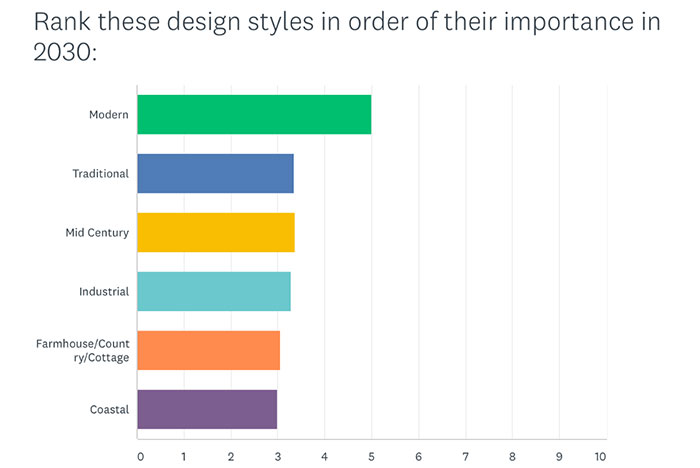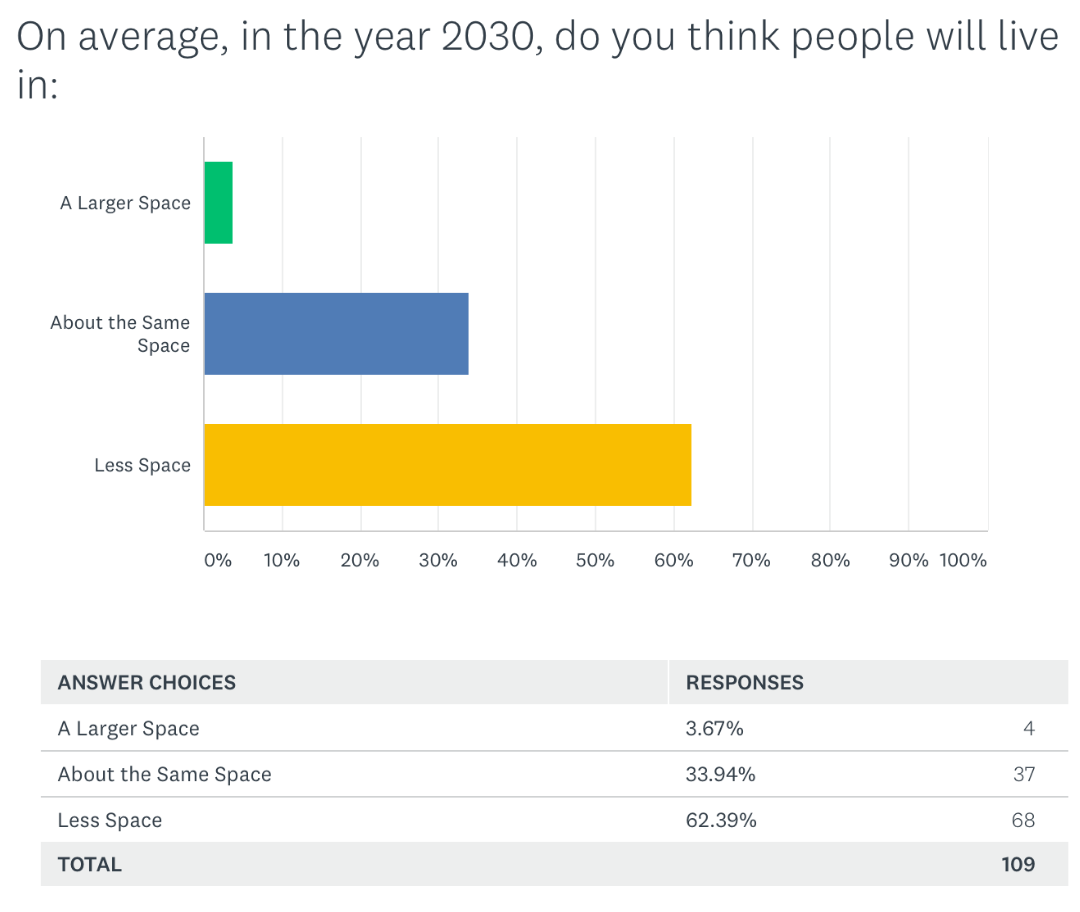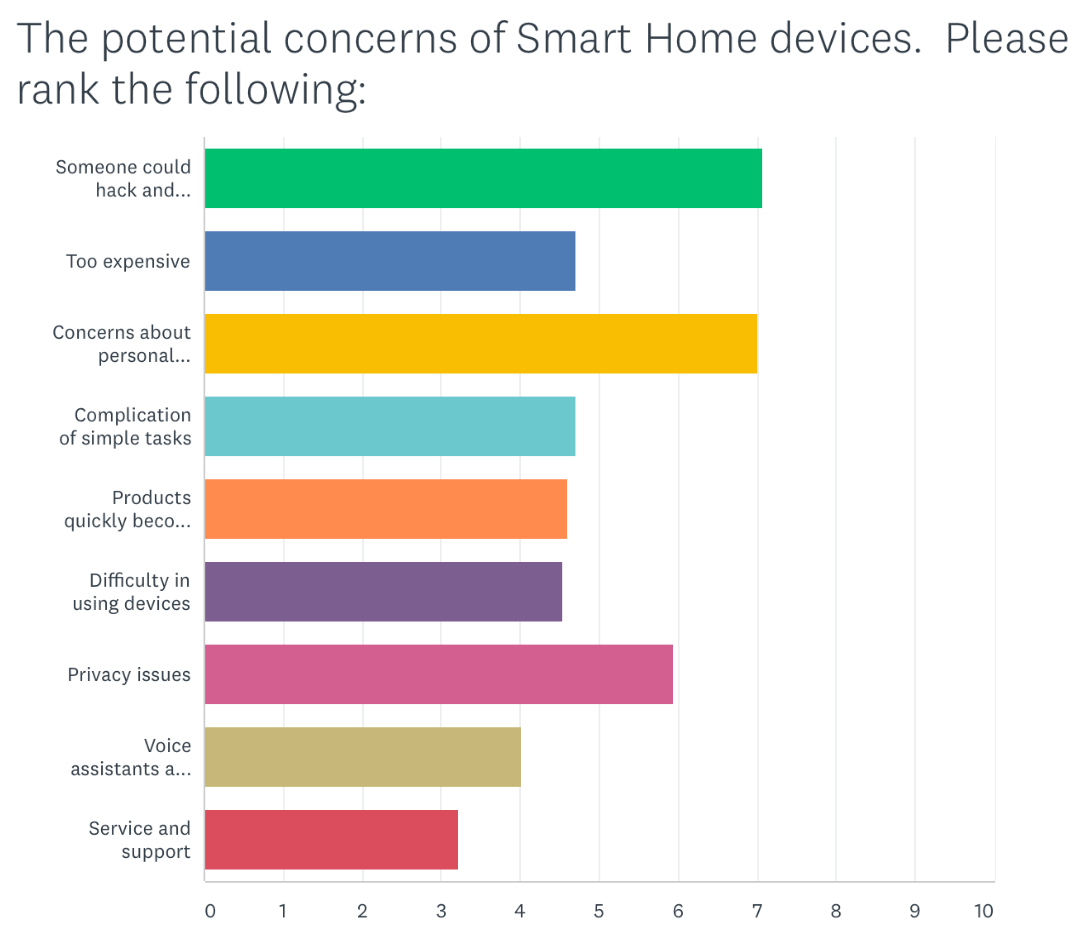2030 IFDA Survey Foresees Key Influences

July 27, 2020
In the next 10 years, our homes will shrink in size, grow healthier in design, and more amenable to aging in place, according to a survey just released by IFDA (the International Furnishings and Design Association).
It’s also likely that more of us will be living with modern design and enjoying modern conveniences, like sensor-activated everything, as wellness and aging-in- place considerations become a priority in residential construction and design.
As IFDA members looked ahead to the year 2030, this year’s Vision for the Future of Home survey came up with a number of predictions that promise to influence home construction and design during the next decade. Here’s a round-up of top findings, with some comparisons to the forecasts IFDA members made in 2010, when members forecast the American home of 2020.
Citing the breadth of IFDA’s membership, survey director Susan Hirsh, FIFDA, pointed out that, “Whether designers, manufacturers, retailers, marketers or media, we’re all experts in our chosen fields as members of IFDA and our insights are varied and compelling.”

Bigger is Not Better
In 2010, IFDA members predicted that homes would be getting smaller. Sixty-two percent of the current survey respondents now agree; back in 2000, only 49 percent foresaw homes getting smaller. The trends toward fewer rooms and the waning of the formal living and dining rooms were predicted in 2010 and again this year for the homes of 2030. In both surveys, then and now, indoor/outdoor rooms were also seen as continuing to be popular.
The Smart Home Bandwagon
The IFDA survey taken in 2010 predicted that by now much home equipment and many home furnishings would be activated by voice and sensor. That has not come true to the extent predicted, but this year’s survey also foresees continued growth in the popularity of voice and sensor activation. Hacking and privacy concerns were listed as top reservations about the smart home. Note: earlier complaints that technologies complicate simple tasks and were difficult to use were not as much of a concern (it appears that we, too, are getting smarter!).
Aging-in-Place & Wellness Lead the Way
Aging-in-place and wellness ranked as high considerations on this year’s survey, surpassing sustainability and green design. Ninety-six percent said that aging-in-place would be considered in any design plan and 94 percent said ditto for wellness concerns. By comparison, a lower number, 81 percent, said more sustainability in design would be a factor in their design planning. However, 90 percent said they expect appliances to become more energy-efficient, compared with 83 percent in the 2010 survey.
Wellness features were most prevalent in the bathroom, where 83% expect to see more such features in the homes of 2030. Smart glass on mirrors and shower doors was a specific enhancement that won out over water-saving/smart toilets and multi-jet showers, popular in the 2010 survey.
Products Light Up
Product multi-functionality is a trend cited in both the earlier and the current surveys. This year, products that produce lighting as a secondary function (64 percent) beat out the idea of products that can also heat, cool, or change color.
In product categories, quartz was the winner for the future of countertops, wood for flooring, and more wallcovering were predicted by 47 percent of the respondents. Fifty-six percent see 3-D-printed furnishings increasing, and 62 percent foresee growth in quick-ship furnishings and almost 61 percent in delivery by drones by 2030.
The Business of Design – Virtual Reality Will Take Hold?
The 2020 survey also addressed how the interior design community will function. In 2030, 92 percent predicted more virtual reality presentations. The trend of consumers ordering over the internet will continue to rise, the survey results say (83 percent agree), and 73 percent see an increase in the trend toward clients doing their own ordering, and 72 percent say the trend toward clients being budget-conscious will continue on the upswing.
Will more clients be hiring interior designers in the future? Survey-takers say no, that the stats will remains the same as at present.

Modern Matters
Stylewise, IFDA members predict that Modern will outpace all other styles by a significant margin.
More News
April 23, 2024 | Trends & Inspirations
Sustainability Report: More Education Needed for Green K&B Design
April 22, 2024 | Awards & Events, Trends & Inspirations
A Look Inside the 2024 Atlanta Homes & Lifestyles Southeastern Designer Showhouse
April 22, 2024 | KBB Collective
Top Designer Shares Favorite KBIS 2024 Products
April 22, 2024 | Trends & Inspirations
Survey: Nearly Half of Homeowners Invest in Green Plumbing
April 21, 2024 | Business
ADJ Interiors Moves Offices
April 2, 2024 | Sponsored
Whirlpool Corp. Brings Purposeful Innovation Home